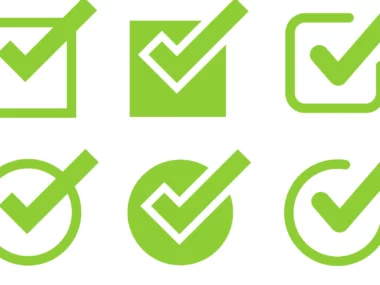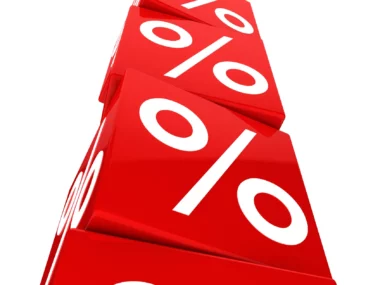Table of Contents
Introduction
Unregulated loans or its difference with the regulated counterpart comes to play in the world of finance where loans play a vital role in helping individuals and businesses achieve their goals. However, not all loans are created equal. It is crucial to understand the difference between regulated and unregulated loans to make informed financial decisions.
You can also read about some of the misconceptions associated with personal loans.
Understanding Regulated Loans
Definition and Features
Regulated loans are subject to specific rules and guidelines set by regulatory authorities. These authorities ensure that lenders follow fair lending practices and provide transparent terms and conditions to borrowers. Key characteristics of regulated loans include standardized interest rates and eligibility requirements.
Regulatory authorities governing regulated loans
The regulatory landscape varies from one country to another. In the United States, for example, the Consumer Financial Protection Bureau (CFPB), the Office of the Comptroller of the Currency (OCC), and the Federal Reserve oversee the lending practices of financial institutions.
Types of Regulated Loans
- Mortgage loans: Regulated by agencies like the Federal Housing Administration (FHA), these loans facilitate homeownership by offering favourable interest rates and down payment requirements.
- Student loans: Governed by the Department of Education, regulated student loans provide affordable funding options for education expenses.
- Auto loans: Regulated by both federal and state agencies, auto loans ensure fair lending practices and protect consumers from predatory rates.
- Small business loans: The Small Business Administration (SBA) regulates loans aimed at supporting entrepreneurial ventures and small businesses.
Benefits of Regulated Loans
Consumer Protection
Regulated loans offer a range of benefits that prioritize the interests of borrowers:
- Ensuring fair lending practices: Regulated loans place strict limitations on predatory practices, protecting borrowers from exploitation.
- Transparent terms and conditions: Borrowers are provided with clear and understandable information about loan terms, empowering them to make informed decisions.
- Protection against predatory practices: Regulated loans guard against unethical practices, safeguarding borrowers from excessive fees and unfair terms.
Lower Interest Rates
Regulated loans often come with lower interest rates compared to their unregulated counterparts. Factors contributing to lower rates include government policies aimed at encouraging responsible lending, lower credit risk due to standardized eligibility criteria, and competition among regulated lenders. These lower rates result in long-term savings for borrowers.
Accessibility and Availability
Regulated loans ensure wider eligibility criteria, opening up opportunities for borrowers with low credit scores and limited financial resources. The structured regulations in place encourage lenders to extend credit to a broader range of individuals and businesses, promoting financial inclusivity.
Limitations of Regulated Loans
Stringent Qualification Process
While regulated loans offer numerous advantages, they also come with certain limitations:
- Documentation requirements: Regulated loans require borrowers to provide extensive documentation to confirm their income, personal information, and creditworthiness.
- Income and credit score considerations: Lenders evaluate borrowers’ income stability and credit scores to ensure they meet the necessary criteria. This can make it challenging for individuals with lower incomes or less-than-ideal credit histories to qualify for regulated loans.
Limited Flexibility
Regulated loans often have more rigid terms and conditions compared to unregulated loans:
- Restrictive terms and conditions: Regulated loans may have stricter rules regarding repayment structures, prepayment penalties, and loan modifications.
- Limited customization options: Borrowers may have limited flexibility in tailoring the loan terms to their specific needs and circumstances.
Understanding Unregulated Loans
Definition and Characteristics
Unregulated loans, as the name suggests, lack government oversight and have minimal regulatory requirements. These loans are typically offered by private lenders or non-traditional financial institutions. Unregulated loans may provide a solution for borrowers who do not meet the criteria for regulated loans or need quick access to funds.
Types of Unregulated Loans
- Payday loans: These short-term loans cater to individuals who need immediate cash but are often associated with high interest rates and fees.
- Private loans: Offered by individuals or organizations without government interference, private loans are flexible in terms but may involve higher risk.
- Peer-to-peer loans: Facilitated through online platforms, peer-to-peer loans connect borrowers directly with individual lenders who may offer financing options outside of traditional regulations.
Risks and Concerns of Unregulated Loans
Higher Interest Rates and Fees
Unregulated loans are notorious for their high-interest rates and associated fees:
- Exorbitant annual percentage rates (APRs): Unregulated lenders often charge substantially higher interest rates compared to regulated lenders, resulting in increased costs for borrowers.
- Hidden charges: Borrowers may encounter additional fees that are not disclosed upfront, making it challenging to accurately evaluate the total cost of borrowing.
Misleading Marketing Tactics
In the realm of unregulated loans, borrowers must be cautious of misleading marketing tactics employed by some lenders:
- Aggressive advertising techniques: Lenders may utilize aggressive marketing strategies to entice borrowers to apply for loans without fully understanding the associated risks and costs.
- False promises and misleading information: Borrowers should be wary of deceptive tactics that make unrealistic promises or fail to disclose crucial terms and conditions.
Exploitative Practices
Unregulated loans have been associated with exploitative practices that can trap borrowers in a cycle of debt:
- Predatory lending schemes: Some lenders target vulnerable individuals with misleading terms, excessively high-interest rates, and hidden fees, resulting in severe financial consequences.
- Harsh penalties for defaulting borrowers: Unregulated loans may come with severe penalties, such as exorbitant late fees and aggressive debt collection practices, exacerbating borrowers’ financial struggles.
Factors to Consider When Choosing Between Regulated and Unregulated Loans
Borrower’s Financial Situation
Consider the following factors when deciding between regulated and unregulated loans:
- Income stability and creditworthiness: Regulated loans typically have more stringent income and credit score requirements, while unregulated loans may accommodate borrowers with less stable financial backgrounds.
- Short-term vs. long-term financial goals: Evaluate whether the loan aligns with short-term needs or long-term financial objectives to determine which type of loan is most suitable.
Risk Appetite and Tolerance
Assess individual risk tolerance and the potential consequences of default:
- Evaluating individual risk tolerance: Some borrowers may be more comfortable with the potential risks associated with unregulated loans due to their unique circumstances.
- Assessing the potential consequences of default: Consider the impact defaulting on a loan of each type could have on one’s financial well-being and future opportunities.
Summary of Key Differences and Considerations
Summary of Regulated Loans
Regulated loans are governed by specific rules and guidelines, offering advantages such as consumer protection, lower interest rates, and broader accessibility. However, they come with limitations such as a stringent qualification process and limited flexibility.
Summary of Unregulated Loans
Unregulated loans lack government oversight and have minimal regulatory requirements. While they may provide quick access to funds, they carry risks such as higher interest rates, misleading marketing tactics, and exploitative practices.
Factors to Consider when Choosing between both options
When choosing between regulated and unregulated loans, borrowers should consider their financial situation, risk tolerance, and the potential consequences of default to make an informed decision.
Frequently Asked Questions (FAQs)
A. Are all personal loans regulated?
- No, not all personal loans are regulated. Some may fall under specific regulations, while others, particularly from private lenders, may operate outside regulatory frameworks.
B. How can I identify if a lender is regulated?
- Regulated lenders are typically licensed or approved by government authorities. Check for accreditation, conduct thorough research on the lender, and review any regulatory information provided by them.
C. Do regulated loans always offer better interest rates?
- Regulated loans often offer more competitive interest rates due to standardized eligibility criteria and government policies aimed at promoting responsible lending. However, individual factors may affect the rates offered by any lender.
D. What are the consequences of defaulting on a regulated loan?
- Consequences of defaulting on a regulated loan may include damage to credit scores, additional fees, legal action, and difficulty obtaining future credit.
E. Can unregulated loans be beneficial in certain situations?
- Unregulated loans may be beneficial in specific situations where borrowers have unique circumstances or urgent funding needs. However, borrowers should exercise caution and carefully consider the associated risks before opting for such loans.
Conclusion
Understanding the difference between regulated and unregulated loans is crucial for borrowers. Regulated loans offer consumer protection, lower interest rates, and wider accessibility, while unregulated loans carry risks such as high interest rates, misleading tactics, and exploitative practices. By considering their financial situation and risk tolerance, borrowers can make informed decisions and navigate the borrowing landscape effectively.






